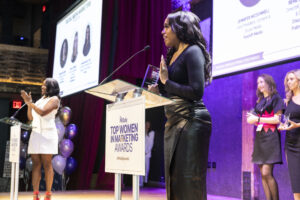How behavioral science can guide your B2B marketing
Here are the four main kinds of emotion and how they can be used to entice new customers—even in a rationalized B2B relationship.

Here’s a fact that B2B PR and marketing pros can sometimes forget: People buy with emotion and justify with logic.
This isn’t our opinion; it’s based on years of scientific research. In B2C, this is a given with marketing and sales tactics designed around emotion, but it applies just as much in B2B campaigns. B2B marketing relies on rationalization with white papers, diagrams and return-on-investment projections. It’s no wonder that B2B marketing is known in some circles as “boring to boring.”
It’s time to end this insane situation in which a knowledge of the human physiology is considered essential when designing a piece of furniture, but not deemed important when designing a B2B marketing campaign. Most B2B brands don’t know how to tap into emotions and leverage their marketing in a human way.
As an example, during the COVID-19 pandemic we took part in a discussion panel about the subject of empathy in marketing. As we talked, it became clear that many B2B brands have only ever had a functional value proposition—one with commercial, rational messaging focusing on “speeds and feeds.” During the pandemic, they had tried to turn to more empathetic messaging, but without any preexisting level of emotion they were finding it difficult without appearing inauthentic. The brands that had invested in their emotional marketing, however, were able to forge a much more natural and organic sense of unity with their audience.
So, how can you tap into emotion-driven marketing? It turns out that there’s a science to it.
Numerous studies have shown that while we spend our lives swimming around in a huge range of human emotions, they boil down to four basic ones: happy, sad, afraid/surprised and angry/disgusted. Let’s look at each of these emotions in turn:
- Happiness. Our first emotional act in life is to respond to our mother’s smile with one of our own. However, as well as being an enjoyable state, happiness is also a driver of action. It’s the main instigator for social media sharing, for instance, because joy increases when it’s spread around and we always want more of it. If your marketing makes your customers feel happy, they’re more likely to buy from you.
- Sadness. When we’re sad, we’re more inclined than normal to understand and empathize with others. Studies have shown that when we feel this emotion, we produce both cortisol and oxytocin. This is a powerful combination because it drives us to take actions that connect with and benefit others. It makes us more generous and trusting, which explains why advertisers love using babies and children in advertising.
- Fear/surprise. This emotion makes us desperate for something to cling on to, so we feel safe once more. It can also cause us to feel a greater affiliation with a brand, the theory being that when we’re scared, we need to share that emotion with others (if no one else is around, a brand is a substitute). Fear can therefore stimulate people toward greater brand attachment.
- Anger/disgust. Anger can lead to aggression but it can also make us more stubborn. It’s not hard to see why anger and frustration aren’t great emotions to stimulate in people you hope will buy from you, although many bank and insurance communications seem to ignore this fact.
It’s clear from these four emotions that creating a sense of connection between brand and customer is essential. This is something you can’t achieve with special offers or product feature comparisons. In an analysis of the IPA Databank, those with purely emotional content performed twice as well (31% as opposed to 16%) as those with only rational content, and also did a bit better than those whose content was mixed. This is because emotions are what have kept us safe for thousands of years; we’re wired to pay attention to them rather than to logical reasoning, which has only been of use in the last few hundred years.
So how can you achieve this balance? First, think about how you can present your product as being part of a larger movement.
Apple does this extremely well. It recognizes that we’re social creatures and want to be part of a revolution of sorts—one that elevates the importance of cutting-edge design and technology, and of creativity. Steve Jobs’ famous product launch events made the participants feel important and special.
Another way is to use storytelling and narratives to engage your audience’s unconscious emotions. Stories stimulate oxytocin, which makes what you’re saying memorable and relevant. They also create a phenomenon called neural coupling, in which the listener turns the story into their own ideas and experience. Reading or hearing a well-told story activates many areas of the brain, including the motor cortex, the sensory cortex and the frontal cortex. It takes you over and sticks around long after the telling is done.
A further way of creating a sense of connection is to find ways of generating trust. Companies that emphasize customer reviews and use human-centric case studies in their marketing are essentially saying, “Trust us because others do.”
Research shows that 70% of consumers read product reviews before purchasing, and that the reviews are 12 times more trusted than the company’s own “word.” But the reviews still need to be believable. Five-star reviews are not the most trusted because some people assume they’re not genuine. Four-star ones have the best credibility, as part of a scientific principle called the “blemish frame.”
You could also consider curiosity. Your goal as a marketer is to gain people’s attention, maintain it and connect it to your product. To do this, an element of intrigue and surprise can be extremely helpful because people love to connect the dots between what they don’t know and what they hope to find out.
Blendtec is a company making high-quality food blenders that it sells to both commercial and domestic customers. Its founder, Tom Dickson, is a charismatic and entertaining personality, who once had a habit of coming into work and seeing if he could use his products to blend all sorts of unlikely objects, such as golf balls and iPhones—with surprising success. Eventually the company created a YouTube channel called “Will it Blend?” and now features videos on its website of him pulverizing garden hoses, silly putty and hockey pucks, among other things. If you watch any of these, we defy you not to feel curious about what a Rubik’s Cube will look like when it’s been blended to dust.
All these ways of developing a sense of connection with your audience are essential because it makes them feel like what they’re experiencing isn’t marketing, but a natural form of positive communication. We’re all wired to make these connections –we’re crying out for them. We need them to make our lives meaningful. It doesn’t matter how advanced we become technologically—we’ll always rely on our subconscious desires to make many of our decisions.
Paul Cash is a creative entrepreneur and storyteller and is the founder of Rooster Punk.
James Trezona is a strategic marketer and MD of Rooster Punk.
This is an edited excerpt is from Humanizing B2B by Paul Cash and James Trezona (Practical Inspiration Publishing, released April 27).






